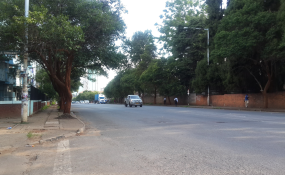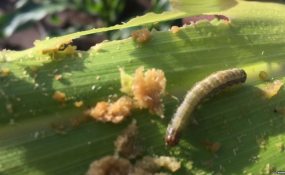By Obinna Chima with Agency Report
Following persistent complaints that some Deposit Money Banks (DMBs) have deliberately frustrated efforts by many Small and Medium Enterprises (SMEs) to access FX from the window created for small businesses in the country, the Central Bank of Nigeria (CBN) has barred all but eight banks from participating in the weekly SME wholesale spot and forwards interventions effective Tuesday.
Sources at the CBN disclosed that the banking system regulator took the decision to bar the erring banks based on field reports, which revealed that only eight banks had sold FX to the SME segment since the inception of the window.
According to a source, the CBN frowned on the action of the banks that declined to sell FX to SMEs to enable them import eligible finished and semi-finished items despite the availability of FX from the CBN wholesale intervention window.
Confirming the sanction, CBN spokesman, Isaac Okorafor, said the CBN’s management decided to bar banks that were yet to utilise any portion of the funds allocated by the CBN under the SME window, since its inception last month.
The affected banks will be barred from participating in the weekly wholesale spot and forwards interventions, he said.
He listed the banks not barred to include Access Bank Plc, Diamond Bank Plc, Fidelity Bank Plc, Heritage Bank, Jaiz Bank, Sterling Bank Plc, Unity Bank Plc and Zenith Bank Plc, warning that the CBN would not sit back and allow any form of instability in the interbank FX market through the actions of institutions or individuals.
He, however, disclosed that the action will be lifted immediately any of the affected banks show evidence of significant utilisation of the funds allocated to them under the SME window.
As an incentive, Okorafor said banks that had utilised their SME funds were allocated all of the $100 million sold at Tuesday’s wholesale auction.
He urged all stakeholders to play by the rules for the benefit of the country and the economy.
The CBN also sustained its intervention by injecting $196.2 million into the various segments of the FX market on Tuesday.
According to Okorafor, the central bank offered $100 million to authorised dealers during the wholesale auction.
A breakdown of the other interventions showed that the CBN made available $52 million to the SME segment, while invisibles such as personal and basic travel allowances, medicals and tuition got $44.2 million.
Okorafor also announced interventions in the retail auction window, which he said would be computed when the CBN receives requests made by customers to the CBN through their respective banks.
He also disclosed that the central bank would continue its weekly sale of $20,000 to dealers in the Bureau de Change (BDC) segment this week.
The spokesman expressed confidence that the interventions will continue to guarantee stability in the market and ensure availability to individuals and business concerns.
But as the CBN slammed the hammer on 14 lenders, Bloomberg reported on Tuesday that foreign investors had begun to key in to the new FX window opened by the CBN last week to ease a severe shortage of dollars.
The naira’s depreciation in the window to almost the same level as the parallel rate means that the new market is already “nearing equilibrium,” Bloomberg quoted the chief executive of FMDQ OTC Securities Exchange, Mr. Bola ‘Koko’ Onadele as stating.
The central bank is ready to supply dollars to bond and stock investors, even for trades of as much as $100 million, he said.
“There’s already been interest from portfolio investors because they can see that the new window will have buyers and sellers determining the rate,” Onadele said in an emailed response to questions.
“The banks are talking to portfolio investors. Volumes will build up.”
The Investors’ and Exporters’ FX window, which started on April 24, is the central bank’s latest attempt to lure back investors who fled in the past two years, exacerbating a crisis that caused Nigeria’s economy to shrink in 2016 for the first time in a quarter of a century.
The idea is that by creating a market for some types of investment transactions, policy makers can satisfy calls to float the currency without risking an inflationary spiral that may come from a formal devaluation.
The naira opened on Monday at 380.31 per dollar in the window. That’s about 17 per cent weaker than the interbank rate of N315 and close to the rate of N391 on the parallel market, which many Nigerian businesses were forced to utilise as hard-currency supplies through official channels dried up.
Eligible transactions in the window include those for loan repayments, interest payments, capital repatriation and remittances.
While Nigeria devalued the naira on the interbank market last June, it stopped short of allowing a free float and intervened to prop up the exchange rate.
Investors, concerned that the currency was overvalued, have stayed on the sidelines: Nigerian stocks declined 33 per cent in dollar terms in the past year, the worst performance globally, according to data compiled by Bloomberg.
Onadele, a former chief trader at Citigroup Inc.’s Nigerian unit who criticized the central bank last October for leaning on dealers not to let the currency fall, said this time around CBN Governor Godwin Emefiele was relaxed about the weaker rate.
“The governor isn’t calling up, worrying about the rate,” Onadele said. “The central bank is ready to sell into this window, via the commercial banks. Any foreign portfolio investor that wants to leave Nigeria will get its money.
“If a foreign portfolio investor wants $100 million tomorrow, its bank should present the trade to the central bank. As long as the investor’s satisfied paying the rate, it will be done.”
The implication is that bond and stock investors would have to disregard the other exchange rates that now exist in Nigeria, with the central bank charging businesses different prices for foreign exchange depending on their needs.
“Foreign portfolio investors should ignore the multiple exchange rates,” he said. “This new window is the relevant one that applies to them. The way the central bank has matched sources of inflows and applications appears unorthodox, but it has ensured a smooth take off.”
Meanwhile, the Manufacturing Purchasing Managers’ Index (PMI) improved by 51.1 index points in April 2017, indicating an expansion in the manufacturing sector after three months of contraction.
This was revealed in the PMI report for April 2017 that was released by the CBN on Tuesday.
The PMI is an indicator of the economic health of the manufacturing sector.
The central bank’s increased dollar sales to banks in late February to try and curb FX shortages have impacted positively on the manufacturing sector.
The latest PMI report showed that 10 of the 16 sub-sectors reported growth in April in the following order: appliances & components; food, beverage & tobacco products; textile, apparel, leather & footwear; chemical & pharmaceutical products; cement; nonmetallic mineral products; printing & related support activities; furniture & related products; electrical equipment and plastics & rubber products.
Paper products; primary metal; computer & electronic products; fabricated metal products; petroleum & coal products and transportation equipment sub-sectors, however, reported a decline in the reviewed period.
Also, the report showed that the production level index for the manufacturing sector expanded for the second consecutive month in April.
The index at 58.5 points indicated an increase in production at a faster rate, compared to the 50.8 points in the previous month.
Similarly, 13 manufacturing sub-sectors recorded an increase in production levels during the review month in the following order: chemical & pharmaceutical products; electrical equipment; transportation equipment; food, beverage & tobacco products; appliances & components; textile, apparel, leather & footwear; cement; nonmetallic mineral products; printing & related support activities; furniture & related products; plastics & rubber products; computer & electronic products and fabricated metal products.
But the petroleum and coal products sub-sectors remained unchanged, while the primary metal and paper products sub-sectors recorded declines in production in April 2017.
However, the employment level index in April 2017 stood at 46.6 points, indicating a slowing decline in employment level after 26 consecutive months of decline.
Of the 16 sub-sectors, 12 recorded declines in employment in the following order: computer & electronic products; electrical equipment; cement; fabricated metal products; petroleum & coal products; nonmetallic mineral products; printing & related support activities; textile, apparel, leather & footwear; chemical & pharmaceutical products; plastics & rubber products; food, beverage & tobacco products and paper products.






